Recent Articles
-
Christmas Sword Buying Guide 2025
Dec 03, 25 10:53 PM
Yokote
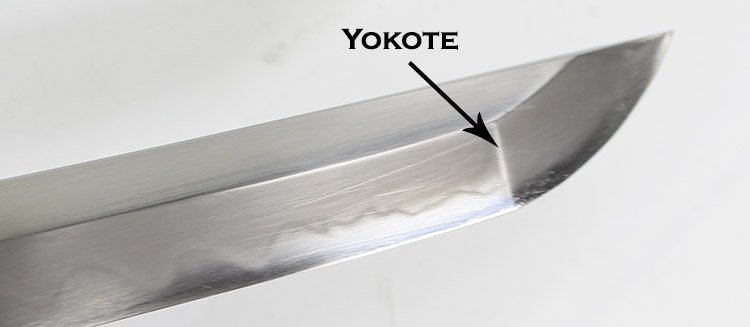
The Yokote is a distinctive feature of standard 'Shinogi Zukuri' style Katana, the most common and recognizable sub type of Samurai Sword, and is essentially the transition point between the body of the blade and the kissaki or tip section (indeed, it can be described as a by product or part of the kissaki, for it marks the point where the kissaki actually begins).
Not all blade styles have Yokote, for example the Shobu Zukuri style blade, a rare type that's tip is specialized in slicing rather than thrusting.
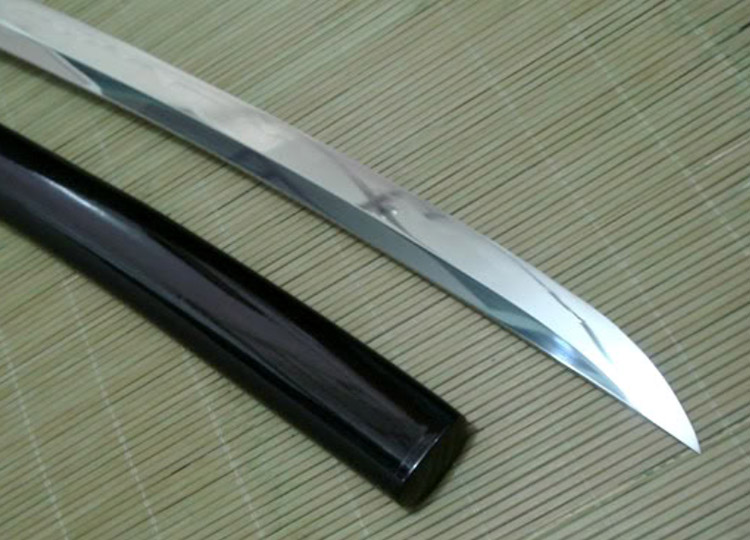 Example of a rarer blade type without yokote or kissaki, the Shobu Zukuri
Example of a rarer blade type without yokote or kissaki, the Shobu ZukuriAside from aesthetics, the yokote or tip transition line, also has an important functional role to play when it comes to reinforcing the tip for effective thrusting. You can clearly see the effect it has by comparing two swords made of the same steel and tempered in the same way (and made by the same company, Cheness Inc) when testing them destructively against 55 gallon steel drums.
Here is what happens when you attempt a thrust with a Shobu Zukuri style blade without the transition line supporting the tip (these tests are not recommended, as only swords made in a certain way can handle this kind of abusive testing - see our page on monotempered beater Katana for more information)..
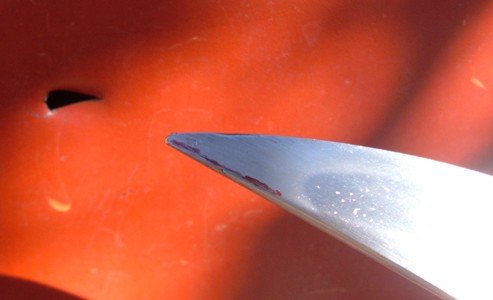 No transition line or kissaki = a small hole and a damaged tip
No transition line or kissaki = a small hole and a damaged tipNow compare this to the results when using a sword with a reinforced transition line.
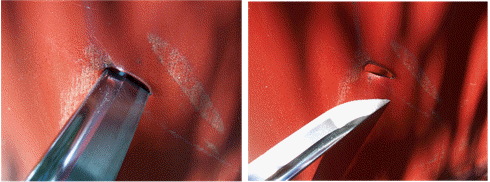 Good transition line and kissaki = a big hole and no damage to the tip
Good transition line and kissaki = a big hole and no damage to the tipThe difference is like night and day, and a lot of the extra durability comes directly from the transition line, which helps dissipate force and absorb the shock of impacts so that it does not concentrate on the tip and cause damage to the blade as we saw in the first example.
The clearer defined and the better shaped the transition line is, the more effective it is to dissipate impact forces on a thrust (tsuki).
'Geometric' Yokote
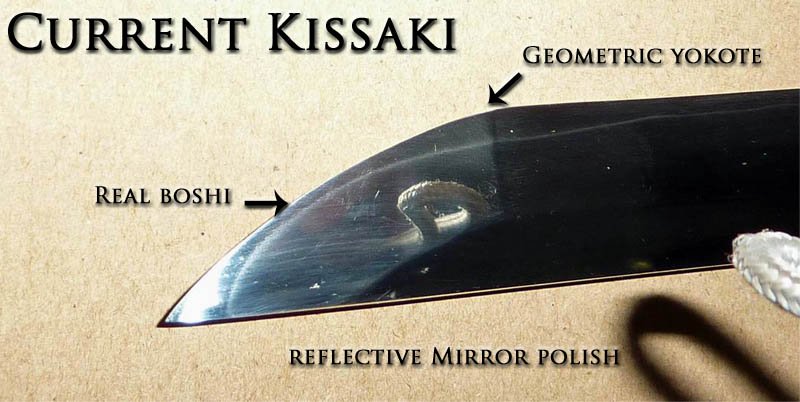
A clearly defined and properly shaped transition line, often called a 'geometric yokote' by sword collectors, has a high aesthetic appeal and is a very desirable trait for the most common type of Japanese Samurai Sword.
However, due to the amount of time required to properly shape it (and of course, the more TIME that goes into making any given sword, the more MONEY it will end up costing) - it is an exceedingly rare feature in mass produced production swords and generally only seen on blades that approach or exceed the $1000 price point.
Finally, a well made transition line demonstrates the skill of the individual polisher, as it is not easy to make a traditional, geometric one and is part of the appreciation of the Japanese sword generally.
I hope this information on Yokote has been helpful. To return to Samurai Sword Terminology from Yokote, click here

Buying Swords Online Can Be DANGEROUS!
Find the Best Swords in the:
Popular & Recommended ARTICLES

The ONLY true free online magazine for sword enthusiasts. Delivered once a month on the 1st day of the month, no filler and no BS, just the latest sword news & info delivered straight to your inbox.












